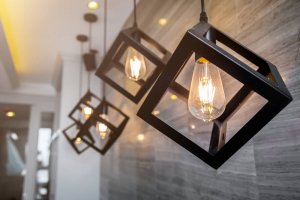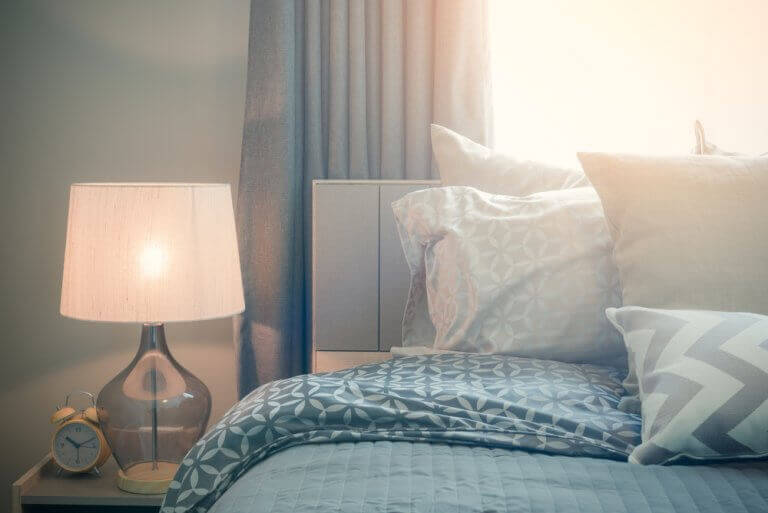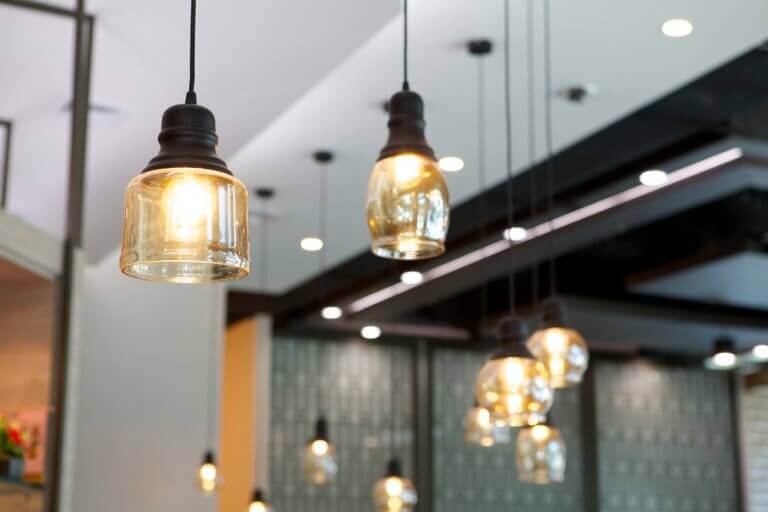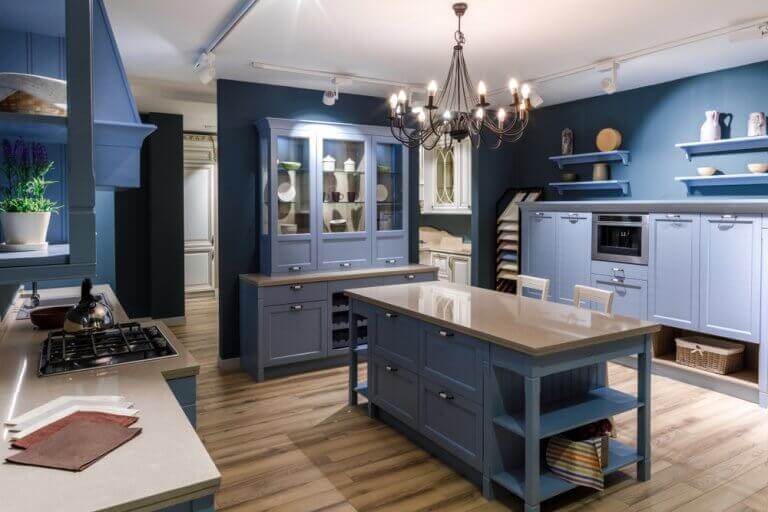How Many Lamps Should I Put in Each Room of my Home?

Lighting is one of the most important aspects of home decor. Apart from the main ceiling lights in a room, lamps are needed in the majority of areas of the home as secondary or auxiliary lighting.
Some of these lamps can be used wherever needed as they are free-standing. For instance, you can move around plug-in lamps that you use at night on your bedside table. With others, you might need to make a small installation, such as for lamps hanging from the ceiling.
Below, we’ll give you some suggestions on the number of lamps you should use in each room of the home depending on the activities that you carry out in each area.
Lamps in the living room

The living room is one of the areas of the home where you should have different types of lighting and lamps. Of course, your living room will have a main light in the ceiling. However, you also have the option of including one or more lamps, depending on the size of your living room.
If you have a reading corner as part of your living room, you should put a lamp there. Make sure you’re not in shadow when you’re reading. This should be a warmer colored light than the central ceiling light.
What about the TV zone? It’s a good idea to have extra lighting there too. Why is that? It’s so that you won’t tire your eyes with the contrast between the brightness of the TV and the rest of the room.
If you also have a dining table in the living room, you could hang a lamp from the ceiling over the table with its own light switch to provide better lighting specifically for the table.
What lamps should I use in the bedroom?

The bedroom is another room in the home where it’s a good idea to use different lamps. Of course, primarily the most powerful light will be in the ceiling. However, secondary lighting will be of great help too.
For the bedside table, you can put a lamp on each side of the bed if you have a double bed. That way, each person will have their own small light and won’t need to bother the other person.
In smaller houses or in apartments, the study area is commonly included in the bedroom. In this case, you’ll need a reading lamp or desk lamp, so that your study area isn’t in shadow from the main light.
If your study area is in another room, that reading lamp will also be important so you don’t strain your eyes.
The entry hall and hallways

What about in passage areas of the house, such as the entry hall and any hallways? It’s not necessary to include extra lighting sources here apart from the main ceiling light.
As their name itself indicates, these areas are only for temporary use, since you just use them to pass from one area of the house to another. You generally don’t carry out activities there.
You can of course, however, use lamps as a decor feature in these areas if you wish.
Lighting in the kitchen

In this area of the house, you have a couple of different options. One of these choices is to obtain all the light you need from ceiling lighting. You won’t need to use any secondary lamps that further illuminate the room if the main ceiling lights are sufficient.
The other option suits many modern kitchens that have an island bench. The idea is to hang a lamp over this central bench. Since the island bench is where you’ll be doing most of the work in the kitchen, it’s quite probable that your hands will be in shadow. That’s why a hanging lamp to provide light directly to the bench will be your best ally.
Other rooms of the home: lamps in the bathroom

While in this room of the home you might not need free-standing lamps, it is a good idea to have a secondary light at the mirror so you won’t be in shadow from the main ceiling light.
Lighting is one of the most important aspects of home decor. Apart from the main ceiling lights in a room, lamps are needed in the majority of areas of the home as secondary or auxiliary lighting.
Some of these lamps can be used wherever needed as they are free-standing. For instance, you can move around plug-in lamps that you use at night on your bedside table. With others, you might need to make a small installation, such as for lamps hanging from the ceiling.
Below, we’ll give you some suggestions on the number of lamps you should use in each room of the home depending on the activities that you carry out in each area.
Lamps in the living room

The living room is one of the areas of the home where you should have different types of lighting and lamps. Of course, your living room will have a main light in the ceiling. However, you also have the option of including one or more lamps, depending on the size of your living room.
If you have a reading corner as part of your living room, you should put a lamp there. Make sure you’re not in shadow when you’re reading. This should be a warmer colored light than the central ceiling light.
What about the TV zone? It’s a good idea to have extra lighting there too. Why is that? It’s so that you won’t tire your eyes with the contrast between the brightness of the TV and the rest of the room.
If you also have a dining table in the living room, you could hang a lamp from the ceiling over the table with its own light switch to provide better lighting specifically for the table.
What lamps should I use in the bedroom?

The bedroom is another room in the home where it’s a good idea to use different lamps. Of course, primarily the most powerful light will be in the ceiling. However, secondary lighting will be of great help too.
For the bedside table, you can put a lamp on each side of the bed if you have a double bed. That way, each person will have their own small light and won’t need to bother the other person.
In smaller houses or in apartments, the study area is commonly included in the bedroom. In this case, you’ll need a reading lamp or desk lamp, so that your study area isn’t in shadow from the main light.
If your study area is in another room, that reading lamp will also be important so you don’t strain your eyes.
The entry hall and hallways

What about in passage areas of the house, such as the entry hall and any hallways? It’s not necessary to include extra lighting sources here apart from the main ceiling light.
As their name itself indicates, these areas are only for temporary use, since you just use them to pass from one area of the house to another. You generally don’t carry out activities there.
You can of course, however, use lamps as a decor feature in these areas if you wish.
Lighting in the kitchen

In this area of the house, you have a couple of different options. One of these choices is to obtain all the light you need from ceiling lighting. You won’t need to use any secondary lamps that further illuminate the room if the main ceiling lights are sufficient.
The other option suits many modern kitchens that have an island bench. The idea is to hang a lamp over this central bench. Since the island bench is where you’ll be doing most of the work in the kitchen, it’s quite probable that your hands will be in shadow. That’s why a hanging lamp to provide light directly to the bench will be your best ally.
Other rooms of the home: lamps in the bathroom

While in this room of the home you might not need free-standing lamps, it is a good idea to have a secondary light at the mirror so you won’t be in shadow from the main ceiling light.







